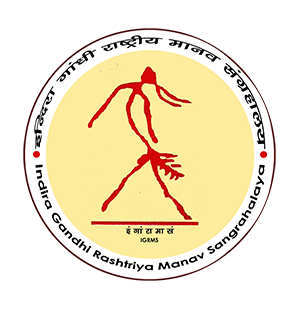’’डोकरा’’
(पीतल गलाकर आकृति बनाने की पारम्परिक तकनीक)
समुदाय : पानगा कानधा
जिला: रायगड़ा
राज्य: ओडिशा
ढोकरा ढलाई तकनीक ओडिशा की जनजातियों के मध्य प्रचलित धातु ढलाई का प्राचीनतम रूप है। रायगड़ा जिले के निकट जनजातीय परिवार लोस्ट वैक्स तकनीक का उपयोग कर इससे देवी देवताओं की -देवताओं की मूर्तियाँ तथा दीपक बनाते हैं। यह मधुमक्खी की मोम का उपयोग ही है जिसने शिल्पकारों के लिये विभिन्न संरचनाओें को आकार देना संभव बनाया है। पूरी प्रक्रिया में कुछ निश्चित स्तर शामिल हैं :
स्तर- 1 : खुरदुरी मिट्टी का उपयोग कर कलाकार अंतिम उत्पाद से मिलती जुलती एक स्थूल आकृति बनाते हैं। मिट्टी की यह स्थूल आकृति सुखाकर सख्त कर ली जाती है।
स्तर- 2 : मिट्टी के अंर्तभाग के चारों ओर मोम का एक पतला तार प्रतिमूर्ती जो कि चिकनी और मुखर होती है लपेटा जाता है फिर वे अलंकारिक लक्षण (नाक-नक्शा) और मोम डालने के नलिकांऐं बनाते हैं। भट्टी में पकाने के समय ये नलिकांऐं पिघली हुई मोम के प्रवाह के लिये खुले रास्ते का काम करती है।
स्तर- 3 : प्रतिमूर्ती को बहुत ही पतली गीली मिट्टी की परत से ढक दिया जाता है। इस परत को धूप में सुखाकर एक और परत चढ़ायी जाती है। सांचे के भीतर पिघली हुई मोम के प्रवाह हेतु मिट्टी की एक कीप बनाते है।
स्तर- 4 : सांचे को सावधानी पूर्वक गर्म करते हैं ताकि मोम पिघलकर नष्ट हो ( इस प्रकार इसका नाम लोस्ट वैक्स पड़) और उस स्थान पर एक गुहा निर्मित हो जाये। यह रिक्त स्थान (गुहा) पिघली हुई धातु से भर दिया जाता है और सांचे को ठण्डा होने के लिये रख देते है। मिट्टी के सांचे को तोड़कर कलाकृति को सफाई और चमकाने हेतु निकाल लेते हैं।
“Dokra Craft”
(Traditional lost –wax casting technique)
Community: Panga Kandha
District: Rayagada
State: Odisha
Dokra casting technology is one of the oldest forms of metal casting prevalent amongst the tribal’s of Odisha. Tribal families in village near Rayagada district, cast boxes, figures of God and Goddesses, and lamps using the lost wax technique. It is the use of bee wax that makes it possible for the craftsmen to give shape to various structures. The entire process involves certain steps-
Step 1: Using rather coarse clay the artist makes a core roughly resembling the end product. The clay core is dried hardened.
Step 2: Thin wire of bee wax warped around the clay core to produce a replica that is smooth and expressive. Then they add the decorative feature and wax channels. The channels, during backing in the furnace will act as a freeway for the molten metal.
Step 3: The replica is coated with a thin layer of very fine wet clay. This layer is sun dried, and further layer of clay added. A clay funnel is added for molten to flow inside the mould.
Step 4: The mould is carefully heated so that the wax melts and is lost (hence the name lost wax technique) leaving behind a cavity.
The cavity is filled with molten metal, and the mould is left to cool. The clay mould is broken and the artefact taken out for cleaning and polishing.



